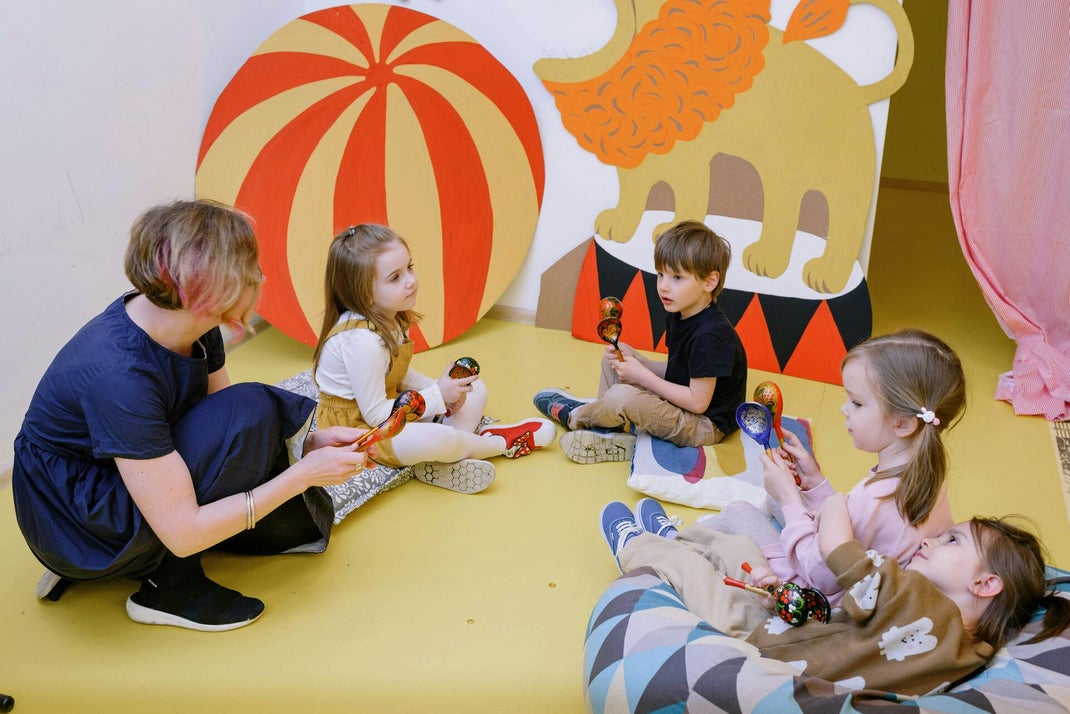Day 4: Music, Movement, and Group Engagement
Date: 10-06-2025
Focus: Group Music Session, Physical Coordination, Social Inclusion, and Communication

Today, I guided a large group music and movement session where children sang familiar action songs, used maracas and drums, and engaged in free dancing. The session encouraged expressive language, coordination, turn-taking, and emotional confidence, aligned with EYLF V2.0 Outcome 3: children have strong sense of wellbeing, Outcome 4: children are confident and involved learners, and Outcome 5: children are effective communicators (AGDE, 2022). Children showed excitement, followed rhythms, and initiated songs, displaying social confidence and communication skills.
I applied intentional teaching strategies by modelling actions, using visual cues, and encouraging verbal participation. I also adapted instructions for children who were hesitant, making sure that all learners were included showing professional standards 1.5: differentiate teaching and 3.4: select and use resources (AITSL, 2017). My facilitation supported children’s emerging gross motor and social-emotional development, aligned with NQS QA1.2.1: intentional teaching and QA5.1.2: dignity and rights of the child (ACECQA, 2020).
I used Gardner’s theory of multiple intelligences which is musical and bodily-kinaesthetic intelligences, to structure learning in a holistic and inclusive way (Northern Illinois University, 2020). Vygotsky’s sociocultural theory further guided my understanding of how participation within the group scaffolded children’s learning through the Zone of Proximal Development (McLeod, 2025).
The session was inclusive, with visual, verbal, and musical prompts allowing all children to participate meaningfully. One child who usually prefers solitary play initiated a movement, showing increased confidence and belonging, and affirming the importance of equity, inclusion, and cultural competence. I upheld the ECA Code of Ethics by honouring each child’s dignity and pace of participation (Early Childhood Australia, 2016).
Although not culturally specific today, I plan to incorporate Aboriginal songs and movements in future sessions, aligning with EYLF Principles: Respect for diversity (AGDE, 2022) and NQS QA6.2.3: community engagement. From a regulatory standpoint, the session met expectations under Regulation 73, ensuring it was educationally valuable and appropriate (ACECQA, 2020).
I supported children’s behaviour through positive guidance, using gestures and rhythm to support engagement and transitions showing Standard 4.3: managing challenging behaviour (AITSL, 2017) and addressing NQS QA5.2.1: collaborative learning (ACECQA, 2020). I also documented the session using time-sample observation, reviewed outcomes with my mentor, and reflected on ways to deepen children’s involvement next time.
Moving ahead, I will introduce culturally diverse songs and movement props like scarves and picture cards to enhance accessibility and representation and strengthen links with families and the community. I aim to rotate music genres weekly, involving children in song selection to foster ownership and identity expression.